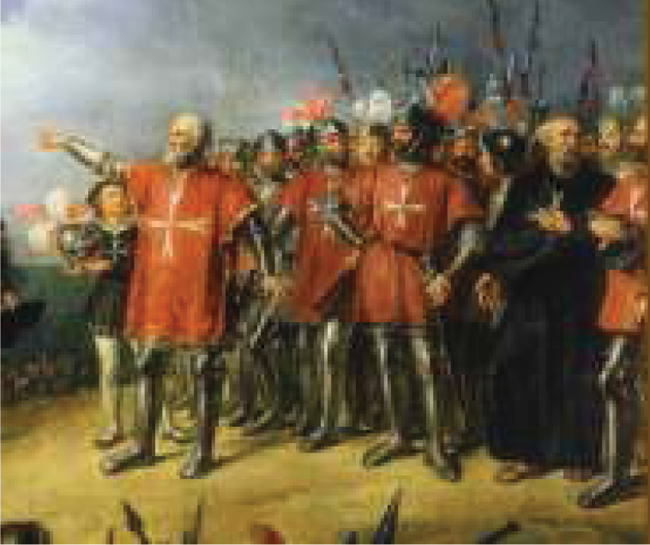On Sunday, 6 July 1614 a fleet of 60 Ottoman galleys approached Saint Thomas Bay and landed a horde of corsairs who proceeded to attack Zejtun. The Old Parish Church of Saint Catherine, now known as Saint Gregory’s, was laid to waste. The residents of Hal Gwann and Bisqallin, now known as ‘ir-Rahal ta’ Fuq’ and ‘ir-Rahal ta’ Isfel’, led by Clemente Tabone gathered under the carob trees of Bulebel. There they resisted the invaders until the cavalry of the Order of Saint John arrived from Valletta. The invaders retreated back to their galleys but then proceeded north and attacked Mellieha.
To commemorate the 400th anniversary of this historic event, the Zejtun Local Council in conjunction with the Ministry of Justice and Local Government, the Ghaqda Folklor, Storja, Arti u Arigjanat taz-Zejtun, Show of Arms, the Parish Church of Saint Catherine V.M. and other local organisations will present a dramatized ‘Son et Lumiere’ with folk song and dance on Sunday 6h July at 20:30.
Based on historic research the ‘Son et Lumiere’ recounts the vicissitudes of the locals from the early 15th century till 1614, two hundred eventful years which witnessed a deep social and cultural change. Records discovered by historians of late Medieval Malta, Godfrey Wettinger, Charles Dalli and Rev. Can. Joe Abela have contributed to a lively and well-documented script for a highly interesting historic video light show utilising the old parish church as background, supported by folk singing, dance and drama in local dialect form.

The Old Parish Church of Saint Catherine itself is a living document of those eventful years. Besides providing services as a parish church it doubled as a vital lookout post for any enemy movements in the approaches of the southeast harbours, namely Marsaxlokk, Saint Thomas Bay, and Marsascala. The historic accounts of Bishop Senator De Mello in 1436, Sicilian notarial deeds recounting local commercial exchanges and the change in local surnames, the far-reaching effects of the Order of Saint John in Malta after 1530, the visit of M.gr Pietro Dusina in 1575 and the 1614 invasion itself are vividly dramatized, at times in humorous fashion. Although informative in content, all is presented in an entertaining manner.
All this takes place on Sunday, 6 July at 20:30 in front of the Old Parish Church. Entrance is free and all are invited to attend.